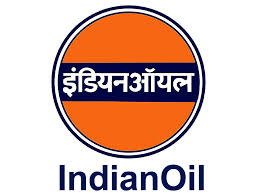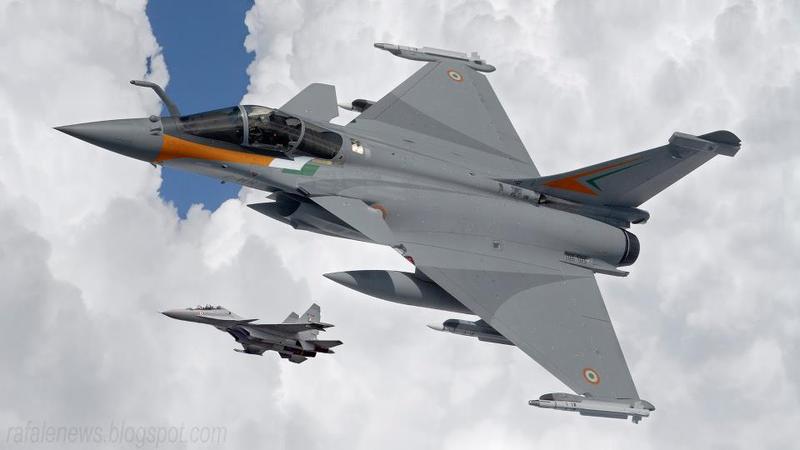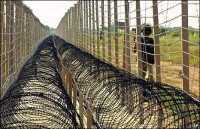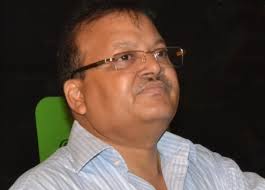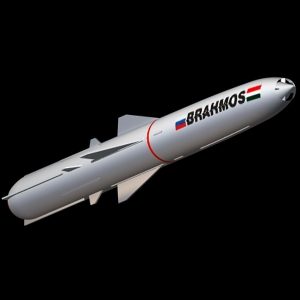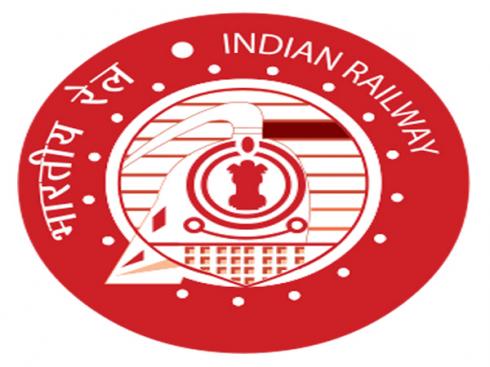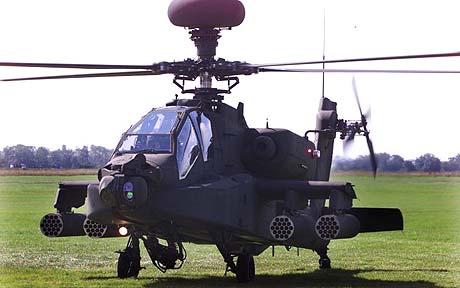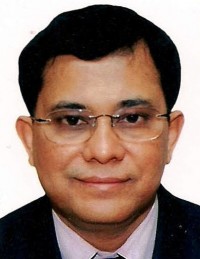Shri Sanjay Banga, Indian Engineering Service(93) appointed as CVO in Indian Rare Earths Limited (IREL), Mumbai under Department of Atomic Energy for a period of 3 year.He comes in place of Shri B R Tarafdar the current CVO who joined IREL on April 2014.
B Ashok takes charge as Chairman of IOC
B Ashok took over as Chairman of Indian Oil Corp, the nation’s largest oil firm.Prior to his appointment as Chairman IOC, Ashok was ED- Retail Sales and ED at the Corporate Office at New Delhi. A mechanical engineer from College of Engineering, Guindy, Madras University with a Post-Graduate Management degree from National Management Programme of Management Development Institute.Ashok has over 33 years of experience in the oil and gas industry.
Rafale Jet induction on fast track
India’s negotiations with French aviation major Dassault for 126 Rafale Medium Multi Role Combat Aircraft (MMRCA) for USD 20 billion “are progressing well” and the contract is likely “sooner than later in the current financial year (2014-15)” a top military commander has said.
The number of Su-30MKI aircraft is also steadily increasing. The IAF has planned induction of 272 Su-30MKIs, periodically upgraded, and nearly 60 percent of them are operational.
The IAF’s proposed strength for combat aircraft is 42 squadrons, to be reached by 2022. Because of the phasing out of the old aircraft like MiG-21s and MiG-23s, the current squadron strength is reported to be 34.
Air Chief Marshal Arup Raha expressed confidence and observed: “Early induction of LCA and MMRCA has been planned for arresting the drawdown in the strength of fighter squadrons…. IAF is likely to have its sanctioned strength of combat squadrons operational sooner than later.”
On the urgent requirement of combat aircraft though, he pointed out: “The MMRCA CNC (Commercial Negotiations Committee) is presently negotiating various aspects of the contract with the L1 vendor, Dassault Aviation of France. The negotiations are progressing well. The contract for 126 MMRCA is expected to be signed sooner than later in the current FY 2014-15.”
Border infra gets Rs 2,250 outlay
Finance Minister Arun Jaitley has allocated Rs 2,250 crore for the modernisation of India’s border infrastructure, besides allocating Rs 990 crore for the socio-economic development of the villages along the borders, in his Budget proposals. This will benefit the villages in Punjab, Jammu and Kashmir and Rajasthan. The border modernisation includes the proposal for strengthening infrastructure along the India-Pakistan border. The government has earmarked Rs 300 crore for the purpose, a sharp increase when compared to an outlay of only Rs 95 crore in the Budget 2013-14 for strengthening the infrastructure along the India-Pakistan border. The border management includes barbed wire fencing, construction of roads, observation posts, installation of flood lighting and other construction activities. Another important provision is the induction of high technology surveillance on the borders along Bangladesh and Pakistan. Rs 367 crore has been allocated for building infrastructure along the India-China border for the current financial year. In the last financial year, Rs 215 crore was allocated for the purpose. In addition, the government has allocated Rs 287.70 crore for setting up border outposts along international borders manned by the Central Armed Police Forces. In the Budget 2013-14, Rs 191 crore was put aside for it. The government has allocated Rs 150 crore for coastal security, which includes setting up mobile check posts, procurement of boats and construction of marine police stations for better surveillance. In the last fiscal, the budget allocated for coastal security was Rs 70 crore. The Budget also focuses on assisting states for dealing with the Left wing extremism. Union Finance Minister Arun Jaitley in his Budget speech said, “I am also allocating adequate funds for carrying out small but much-needed developmental activities as additional central assistance for Left wing extremist-affected districts.” Presently, a total of 182 districts across 20 states are facing the problem of Left wing extremism. The government has allocated Rs 40 crore as assistance to states for Naxal management for the current financial year, as compared to the revised budget of Rs 36 crore for 2013-14. During his speech, the Finance Minister also said the modernisation of state police forces would be reviewed. “I propose to enhance the allocation from Rs 1,847 crore in the BE of 2013-14 to Rs 3,000 crore in the current financial year,” he said. The government has allocated Rs 12,169.51 crore for India’s largest paramilitary and counter-Naxal force, the Central Reserve Police Force (CRPF), for the current financial year. In contrast to this year, the revised Budget of 2013-14 for the CRPF was Rs 11,373.72 crore. The CRPF also assists the states in the maintenance of law and order. The BSF, which guards the India-Pakistan and India-Bangladesh borders, has been allocated Rs 11,242.02 crore for the current financial year, as compared Rs 10,378.77 crore in 2013-14. The ITBP, which guards the India-China border, has been allocated Rs 3082.48 crore, which is lesser than the last fiscal allocation of Rs 3124.33 crore. The Central Industrial Security Force (CISF), which protects the properties of public sector undertakings and other central and state government agencies, has got Rs 4,729.22 crore for the current financial year, as compared to Rs 4391.49 crore in 2013-14. In regard to India’s central intelligence agencies, the government has allocated Rs 101.03 crore for the National Investigation Agency (NIA), as compared to Rs 80.12 crore in the last financial year. Increase in budget for building infrastructure Rs 2,250 cr allocated to strengthen and modernise infrastructure along borders Rs 990 cr kept aside for the socio-economic development of the villages along the borders The border management includes barbed-wire fencing, construction of roads, observation posts, installation of flood lights Rs 367 crore allocated for building infrastructure along the India-China border
Shankar Agarwal to have additional charge of Ministry of Women & Child Development
Shri Shankar Agarwal (UP;80) Secretary ,Ministry of Urban Development to hold additional charge of the post of Secretary ,Ministry of Women & Child Development for a period of 10 days with immediate effect.
Governors appointed for four States
The government Monday appointed new Governors for Uttar Pradesh, Chhattisgarh, West Bengal and Gujarat.The Governors are Ram Naik (Uttar Pradesh), Balramji Dass Tandon (Chhattisgarh), Keshari Nath Tripathi (West Bengal) and Om Prakash Kohli (Gujarat)
BrahMos missile orders exceeded record $6 billion in India
Total orders for different versions of the winged supersonic missile BrahMos by the Indian navy and armed forces have exceeded $6 billion, the president of the Russian-Indian missile developer and producer Sivathanu Pillai told journalists on Monday.
Joint Russia-India BrahMos Aerospace has requested the Indian government for permission to export the winged supersonic missiles BrahMos to third countries.
Russia had already approved the proposal, while a number of countries had expressed readiness to purchase BrahMos, he added.
The permit could be obtained by the year-end and mentioned the earlier compiled list of fourteen countries, where India could export weapons.
BrahMos Aerospace established in 1998 was named after the rivers Brahmaputra and Moskva. The missile that attacks targets designated 290 kilometres away from an altitude as low as ten meters has already been purchased by the Indian navy and armed forces.
BrahMos cruise missile successfully test-fired
India successfully test-fired the BrahMos supersonic cruise missile on Tuesday from a defence base in Odisha, an official said. It has a range of 290 km and can carry conventional warhead of up to 300 kg.
The missile was launched from the Integrated Test Range in Chandipur in BalasoreBSE 1.63 % district, about 230 km from here.
“The test was successful. It was a land version of BrahMos. It was done with a total indigenous airframe,” M.V.K.V. Prasad, director of the test range.
The missile, developed by the Indo-Russian joint venture BrahMos Aerospace, has a top speed of Mach 2.8, about three times faster than the US subsonic Tomahawk cruise missile. This makes BrahMos one of the fastest cruise missiles in the world.
The missile can be launched from submarines, ships and aircraft. Sea and ground launched versions of the missile have been successfully tested and put into service with the army and the navy.
Courtesy:EconomicTimes
NDA Government Presents Its First Rail Budget
Railway Minister Sadananda Gowda began presenting the Narendra Modi government’s first Rail Budget today, with an acknowledgement of the enormity of the task he faces to revamp the mammoth Indian Railways.
He stated his intent to make the Railways the biggest freight carrier in the world and pointed out that the Indian Railways carries more than the entire population of Australia in a day.
He is expected to suggest a bigger private sector role in developing the Railway in his budget, traditionally regarded by economists as setting the stage for the Union Budget, to be presented on Thursday, in which the ruling BJP government will lay out its economic reform plans.
Prime Minister Narendra Modi last week said in a speech he hopes for more private sector money in modernising the railways, still the main form of long-distance travel for most of India’s population. “We want the railway stations to have better facilities than airports. This is our dream,” said Mr Modi. Mr Gowda is expected to announce more public-private partnerships in railway infrastructure.
“You will see a change in near future,” Mr Modi had promised, adding that “private parties would also be ready to invest because this is a good project economically and will benefit everyone.”
Mr Modi’s BJP, which took office in May after scoring a landslide election win, has also said it favours a greater role for private business in building other infrastructure such as roads and ports. But the BJP has said modernisation of the decrepit and over-burdened train network tops its ambitious agenda for infrastructure-building in the country.
Dilapidated transportation has held back growth of Asia’s third-largest economy, analysts say.
To help fund new wagon purchases, modernise track, revamp lines and improve safety, the government hiked passenger fares by 14.2 percent and freight rates by 6.5 percent — the steepest rise in 15 years and a politically controversial move.
A public outcry saw the government later partially climb down over city commuter fare hikes, underscoring the difficulty in reducing subsidies in a tough economic environment.
The economy is growing by just under five percent annually, far below the near double-digit pace of a few years ago.
Finance Minister Arun Jaitley underlined Monday in parliament the government’s determination to go ahead with difficult belt-tightening decisions, saying “for any public utility to run, the users must pay”.
The government has also suggested it may open up the railway to foreign investors, and analysts will be looking for any suggestion of such a move in the rail budget as a sign of desire to welcome more outside investment.
Analysts say as much as $500 billion, or nearly Rs. 30 lakh crore must be invested over the next decade to overhaul the network.
In the Union Budget, Mr Jaitley is expected to press forward with fuel price rises as part of efforts to curb subsidies.
India’s subsidies on energy, food and fertiliser total some Rs. 2.6 lakh crore annually. ($1= Rs. 60)
Courtesy: NDTV
India close to finalizing Chinook and Apache chopper deals
India is now close to inking major deals worth over $2.5 billion for two iconic American helicopters, the Apache attack and Chinook heavy-lift choppers, which thrashed their Russian rivals both technically and commercially earlier.
Defence ministry sources on Monday said the around $1.4 billion deal for 22 AH-64D Apache Longbow gunships, armed with deadly Hellfire and Stinger missiles, and the $1.1 billion one for 15 CH-47F Chinooks, equipped with powerful contra-rotating tandem rotors, are “almost ready” now.
“These two deals for IAF will be placed for approval before the first defence acquisitions council (DAC) meeting to be chaired by Arun Jaitley on July 19. Thereafter, the cases will be moved for the cabinet committee on security’s final nod,” said a source.
The deals for the two Boeing-manufactured helicopters, both of which have seen action in Iraq and Afghanistan, will further bolster the expanding US presence in the lucrative Indian arms market. It has already bagged defence contracts worth around $10 billion, including for aircraft like P-8I, C-130J `Super Hercules’ and C-17 Globemaster-III, over the last decade.
The Apache project, in fact, is likely to get even bigger. After a long, bitter turf war with IAF, the Army earlier this year got “in principle” approval for getting the “ownership” for 39 Apache gunships for its own “strike” formations.
“After the contract for 22 Apaches for IAF, the Army will pursue a follow-on order for three attack helicopter squadrons. The Army hopes to get its Apaches, armed with guided missiles, cannons and rockets to target enemy tanks and infantry on the ground, by 2018,” said another source.
The first Apache deal is going to be “a hybrid one”, with one contract to be signed with Boeing for the helicopter and the other with the US government for its weapons, radars and electronic warfare suites. “While the CNC (contract negotiation committee) for Chinooks was completed some time ago, Boeing had been asked to re-submit their offsets package for the Apaches,” he said.
Apart from the 22 Apaches, the project involves the acquisition of 812 AGM-114L-3 Hellfire Longbow missiles, 542 AGM-114R-3 Hellfire-II missiles, 245 Stinger Block I-92H missiles and 12 AN/APG-78 fire-control radars, among other things.
“Attack helicopters are as deadly as fighter jets, capable of detecting, containing and destroying enemy forces. They are also expensive,” said an officer. IAF currently has just two squadrons of ageing Russian Mi-25/35 attack helicopters, with Army being dependent on the force for its own requirements.
The Chinooks, in turn, are capable of “internal transport” of 55 armed troops or two combat-equipped jeeps. They are also capable of “external transport” of 11,100-kg of equipment like 155mm howitzers.
CMD positions vacant in 35 PSUs
In a PSU news segment; Several state-owned firms across the country are headless at the moment, with top posts lying vacant in as many as 35 Central Public Sector Undertakings (PSUs) including Coal India, MTNL, BSNL and NHPC, the Parliament was informed on Monday.
In all, 25 Chairman-cum-Managing Director (CMD) posts, 8 MD posts and 2 Chairman posts are lying vacant, according to a written reply by Minister of State for Heavy Industries and Public Enterprises P Radhakrishnan in the Lok Sabha.
The main reasons for vacant Board level posts in CPSEs include occurrence of unforeseen vacancies which arise due to resignation/death/vertical shift of incumbent, non-confirmation/non-extension of tenure of incumbent and scrapping of recommended panel by the unforeseen authority.
Moreover, delay in obtaining vigilance clearance from competent authority; court cases; creation of new Board level posts; and decision of the concerned administrative Ministry to keep a post in abeyance, etc. are other reasons.
The CMD post is lying vacant in Hindustan Photo Films Manufacturing Company, MMTC, Hooghly Dock and Port Engineers, NHPC, Hindustan Cables, Brahmaputra Valley Fertilizer Corporation, Pawan Hans Helicopters, Central Inland Water Transport Corporation, Scooters India, Bharat Bhari Udyog Nigam, National Textile Corporation, Orissa Mineral Development Company, Bisra Stone Lime Corp.
Other companies where the CMD post is vacant include Bridge & Roof Company India, Northern Coalfields, Power Finance Corporation, Indian Railway Catering and Tourism Corporation, Project & Development India, National Jute Manufacturers Corporation, Mahanagar Telephone Nigam (MTNL), Western Coalfields Ltd, Coal India, Bharat Sanchar Nigam Ltd (BSNL), South Eastern Coalfield and British India Corporation.
Those PSUs where MD post is vacant include HMT Chinar Watches, Nagaland Pulp & Paper Company, Ferro Scrap Nigam, ONGC Videsh Ltd, Rajasthan Drugs & Pharmaceuticals, Dedicated Freight Corridor Corporation of India, Chennai Petroleum Corp and Central Cottage Industries Corporation of India. Indian Oil Corporation and Airports Authority of India do not have a chairman.
News courtesy: BureaucracyToday.
Harun Rashid Khan assumes charge as RBI Deputy Governor
Harun Rashid Khan took over today as Deputy Governor of the Reserve Bank of India. As Deputy Governor he has been appointed for a period of three years. He will look after Central Security Cell, Department of External Investments and Operations, Department of Government and Bank Accounts, Department of Payment and Settlement Systems, Foreign Exchange Department, Internal Debt Management Department and Inspection Department.
Prior to being appointed as Deputy Governor Shri Khan was Executive Director of Reserve Bank of India since October 2007 and looked after the Department of External Investments and Operations, Foreign Exchange Department, Internal Debt Management Department and Department of Government and Bank Accounts. He was earlier Regional Director of the Bank’s New Delhi Office and prior to that he was Principal of the College of Agricultural Banking in Pune. Shri Khan’s central banking career spanned over 32 years during which he has discharged diverse responsibilities in RBI in areas of rural credit, currency management, banking supervision & regulation, debt management, reserve management, exchange control, personnel administration and internal accounts of the Bank. Shri Khan has been associated with number of internal and external committees, such as, Committee on Technology Exports, Committee on Ways and Means Advances to the State Governments (as Member Secretary), Working Group on Instruments of Sterilisation (as Convener), International Task Force on Central Counterparties (CCPs), Working Group on Model Fiscal Responsibility and Budget Management Bill for States (as Convener).
He was closely involved with the Internal Group of RBI on Rural Credit and Microfinance (popularly known as the Khan Committee) as the chairman. Based on the recommendations of the Khan Committee, the Reserve Bank issued guidelines to expand the banking outreach through Business Facilitators and Business Correspondents with ICT support for spearheading financial inclusion in the country.


